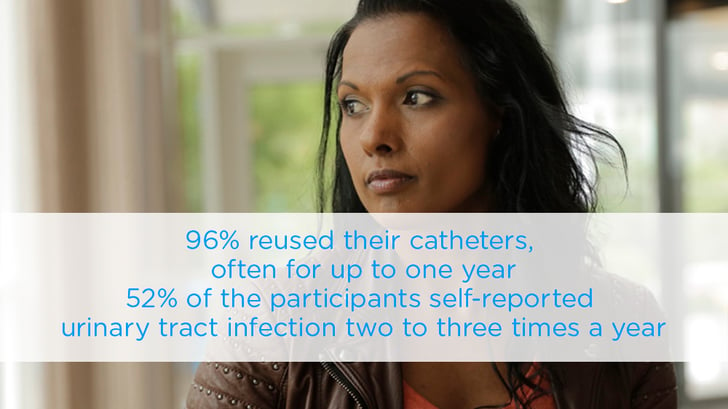This is the first study performed in Nepal to identify the rate of intermittent catheterization (IC) continuation after a rehabilitation program, among individuals with spinal cord injuries (SCI).

The results show perceived barriers to proper IC technique and continuation, among individuals and thus demonstrate the need to improve both patient and caregiver education to maintain the continuum of care for people with SCI using intermittent catheterization. 52% of the participants self-reported urinary tract infection two to three times a year
This study aimed to identify existing intermittent urinary catheterization practices, and related barriers among people with spinal cord injury living in five districts of Nepal. A total of 78 individuals with spinal cord injury were included in this descriptive cross-sectional study. The results showed e.g. that 96% reused catheters, at times up to 1 year. More than half (52%) of the participants self-reported urinary tract infection two to three times a year but it was also stated that few respondents sought treatment every time they had new symptoms.
Variations were seen in the frequency of catheterization, type of catheter used, duration of reuse, and cleaning and storage techniques. Common perceived barriers were inaccessibility of toilets (73%) and difficulties obtaining supplies (72%).
From this study we identified that the existing education and training for SCI patients in a rehabilitation program for intermittent catheterization is insufficient. Common problems such as infection are not well addressed and further training should be standardized along with an effective system of evaluation and follow-up strategies to maintain continuum of care.
Both government and non-government agencies could initiate programs for long-term home and workplace modification to assist people with spinal cord injury to live successfully in the community and increase the availability and ongoing institutional supply of necessary items for intermittent catheterization. This study should increase awareness among the health professionals in the communities of Nepal about intermittent catheterization practice and its barriers.
This is the first study performed in Nepal to illustrate the situation and it was supported by a grant from Wellspect Healthcare.




